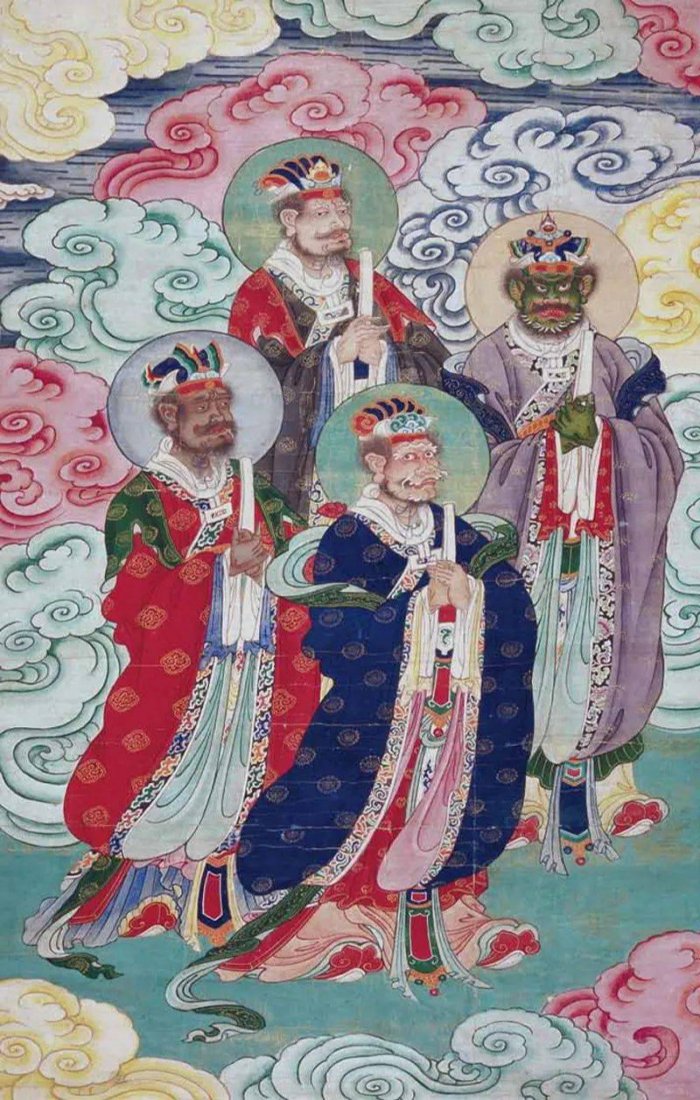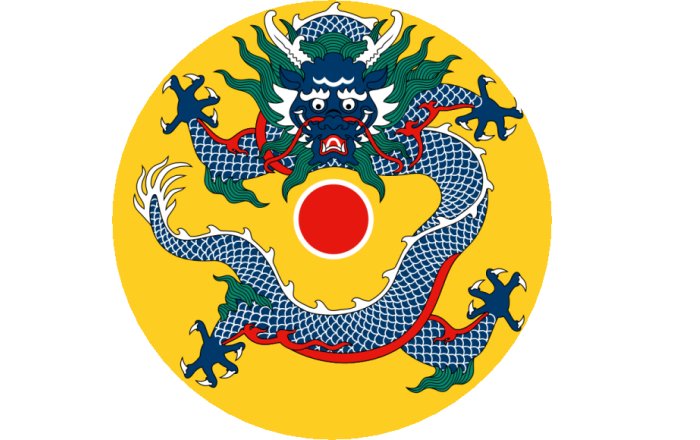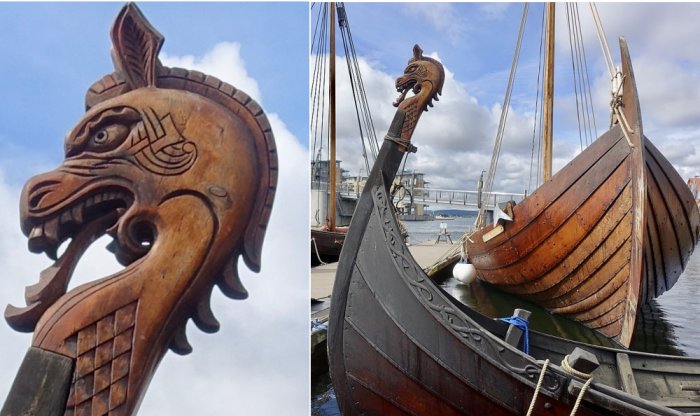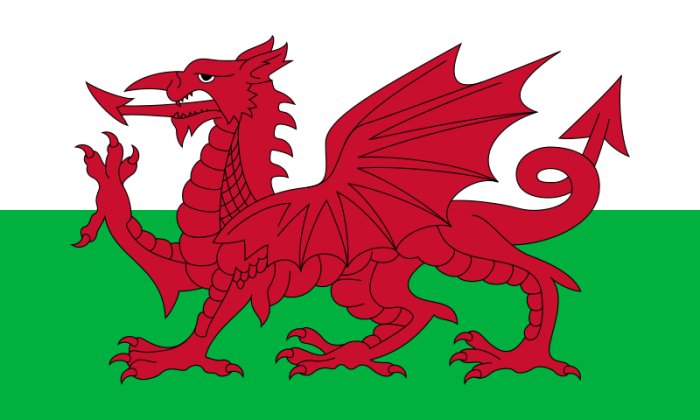Dragons And Dragon Kings In Ancient Mythology
A. Sutherland - AncientPages.com - We encounter dragons in almost every ancient world culture. Dragons played an essential role in the beliefs of our ancestors and were depicted in various ways.
Four Seas Dragon King. Credits: Unknown (Qing Dynasty) - Public Domain
Dragons can be placed in East and West groups, regarded as either good or very fearsome and evil creatures.
Dragons in Ancient Chinese Mythology
In ancient China, the dragon was a highly significant creature that became a symbol of the Emperor, and his throne was sometimes called the Dragon Throne. Ancient Chinese believed dragons were in control of the weather and water. These creatures were said to be able to manipulate oceans, floods, tornadoes, and storms.
There are nine distinctive Chinese dragons; some are serpent-like creatures with large bodies and long heads. The dragon in China is a benign creature that is said to bring wisdom, power, and luck. They are famous for their goodness, warding off evil, protecting the innocent, and ensuring safety.
Tradition and celebration of New Year in China can be traced to a dragon named Nien (or "year").
The Traditional Rounded Chinese Dragon is usually seen on imperial buildings, official uniforms, and coins. The design dated back to Tang Dynasty (7th-8th century). Please also note this is not the emblem of the Qing dynasty. Image credit: Sodacan - CC BY-SA 4.0
Nien was a legendary wild beast that attacked people at the end of the old year. Villagers would use loud noises and bright lights to scare the creature away, a practice that slowly morphed into the Chinese New Year festivities. Today the dragon has its year on the Chinese calendar.
Dragons In British And Scandinavian Mythology
Dragons were often depicted as wingless creatures in the British Isles and Scandinavia. In this part of the world, depictions of the dragon tended to show a malevolent creature that was very difficult to kill.
The West dragon was wingless, lived in dark places or wells, and guarded hoard treasures. Approaching the dragon was almost impossible because of its poisonous fire breath.
Dragons in British and Scandinavian mythology often appear in stories when a prince tries to save a young maiden from being abducted by a fearsome animal. If he can slay the dragon, he can become the new King and win the girl as his bride.
Dragon Kings In Chinese Mythology
In ancient Chinese mythology, we encounter five enormous dragon kings who were rainmakers and rulers of the waters.
Four of them were stationed at the cardinal points and ruled the seas. Their chief had his abode in the middle. The five dragon kings were named Lung Wang.
The dragon kings of China lived in crystal palaces under the sea. Their underwater dwellings were part of the mysterious Underworld that could only be reached through underground mountain caves and special secret entrances. When the Water Dragons rose to the surface, they caused typhoons, and when they flew through the air caused heavy rain and hurricanes. The Dragon Kings are among the deified forces of nature of the Taoist religion.
Dragon's Head As A Viking Symbol
A dragon's head was one of the most famous symbols of the Vikings. The Viking dragon was, in many ways, a representation of the Midgard Serpent, a mythical sea creature who fought with the Norse god Thor.
Many ships were equipped with carved dragon heads on top of the stem, while the stern often was shaped like a dragon's tail.
Vikings built ships with huge dragonheads because they wanted to appear as frightening as possible from a long distance.
Prows of viking ships and medieval boats moored to the pier in the harbour of the small city of Tønsberg, Norway: "Saga Oseberg", a 2012 built full scale replica of the "Oseberg Ship", a Viking ship from about AD 820 discovered in a burial mound near Tønsberg, with the prow ending in a spiral shaped serpent's head "Saga Farmann", a 2018 built reconstrucion of the "Klåstadskipet" ship from about AD 820 "Sæheimr", built 2016, inspired by the "Fjørtoftbåten" boat from about AD 860, decorated with a dragon's head on the fore stem. Image credit: Wolfmann - CC BY-SA 4.0 - The photograph was taken in August 2019. - more.
Vikings called their longships "Drakkar" or dragon ships, and the dragon was a powerful and fearsome symbol of war.
The Pendragons Of Wales
Many have seen the Welsh flag features a red dragon and that the Prince of Wales uses rampant dragons on his banner.
Flag of Wales. Image credit: Unknown - Public Domain
The old British word "draig" means dragon (and warrior or ‘leader,’ while the "pen" meant head. The two words combined form Pendragon or Pen Draig, a noble surname in early Britain as early as the fifth century. The dragon symbol continued to be used by the last native Welsh princes of Wales, Llewelyn ap Gruffydd and Owain Glyndwr, during their struggles against English occupation in the 14th and 15th centuries.
The Pendragon name in Welsh literature includes Uther Pendragon, father of the legendary King Arthur.
Ancient And Modern Superstitions About Dragons
In ancient times, there were also many superstitions about the dragon; surprisingly, some persist even today.
It was, for example, believed that the blood of the dragon held unique properties that could give a person the power to see into the future. On the other hand, it was also said that if a knight dipped the tip of his sword into the dragon's blood and stabbed you with it, the wound would never heal.
Dragon teeth were thought to bring good luck to those who possessed them.
The dragon has survived as a powerful symbol in many parts of the world.
Written by – A. Sutherland AncientPages.com Staff Writer
Updated on Apr 1, 2024
Copyright © AncientPages.com All rights reserved. This material may not be published, broadcast, rewritten or redistributed in whole or part without the express written permission of AncientPages.com
Expand for referencesDoug Niles - Dragons: The Myths, Legends, and Lore
Carol Rose - Giants, Monsters, and Dragons: An Encyclopedia of Folklore, Legend, and Myth
More From Ancient Pages
-
 Lake Huron Was Home To A 9,000-Year-Old Civilization – Underwater Structures And Artifacts Reveal
Archaeology | Jun 17, 2021
Lake Huron Was Home To A 9,000-Year-Old Civilization – Underwater Structures And Artifacts Reveal
Archaeology | Jun 17, 2021 -
 They Spoke The Language Of The Gods – Secret Symbols, Unknown Books And Manuscripts – Part 2
Ancient Mysteries | May 23, 2018
They Spoke The Language Of The Gods – Secret Symbols, Unknown Books And Manuscripts – Part 2
Ancient Mysteries | May 23, 2018 -
 Norse Goddess Sif Who Lost Her Golden Hair Due To Loki’s Evil Deed
Featured Stories | Jun 30, 2018
Norse Goddess Sif Who Lost Her Golden Hair Due To Loki’s Evil Deed
Featured Stories | Jun 30, 2018 -
 X-Rays Reveal Secret From Da Vinci’s Masterpiece Mona Lisa
News | Oct 14, 2023
X-Rays Reveal Secret From Da Vinci’s Masterpiece Mona Lisa
News | Oct 14, 2023 -
 First Human Culture Lasted 20,000 Years Longer Than Thought – New Study
Archaeology | Jan 11, 2021
First Human Culture Lasted 20,000 Years Longer Than Thought – New Study
Archaeology | Jan 11, 2021 -
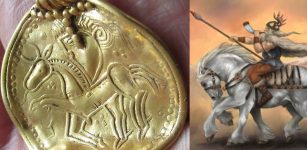 Discovered Gold Pendant Of Odin And His Horse Sleipnir Might Be Linked To The Heruli Tribe
Archaeology | Apr 16, 2016
Discovered Gold Pendant Of Odin And His Horse Sleipnir Might Be Linked To The Heruli Tribe
Archaeology | Apr 16, 2016 -
 Stone Age Settlement Discovered Underwater In Finland
Archaeology | Aug 9, 2018
Stone Age Settlement Discovered Underwater In Finland
Archaeology | Aug 9, 2018 -
 Radar Reveals ‘Ghost’ Footprints From Pleistocene Era
Archaeology | Nov 13, 2019
Radar Reveals ‘Ghost’ Footprints From Pleistocene Era
Archaeology | Nov 13, 2019 -
 400-Year-Old Shipwreck Found Off The Coast Of Portugal Labeled ‘Discovery Of A Decade’
Archaeology | Sep 26, 2018
400-Year-Old Shipwreck Found Off The Coast Of Portugal Labeled ‘Discovery Of A Decade’
Archaeology | Sep 26, 2018 -
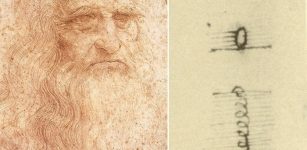 Leonardo da Vinci’s Paradox Cracked
Ancient Technology | Jan 19, 2023
Leonardo da Vinci’s Paradox Cracked
Ancient Technology | Jan 19, 2023 -
 Flying Objects Were Present In Ancient Skies
Featured Stories | May 9, 2014
Flying Objects Were Present In Ancient Skies
Featured Stories | May 9, 2014 -
 Infamous End Of Lugalzagesi – Ambitious King Who United Sumer
Featured Stories | Apr 30, 2020
Infamous End Of Lugalzagesi – Ambitious King Who United Sumer
Featured Stories | Apr 30, 2020 -
 Mongol Empire: Rise And Fall Of One The World’s Largest And Fearsome Empires
Featured Stories | Mar 26, 2021
Mongol Empire: Rise And Fall Of One The World’s Largest And Fearsome Empires
Featured Stories | Mar 26, 2021 -
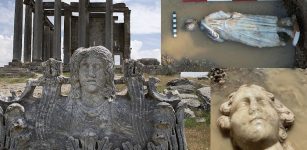 More Greek Gods’ Heads And A Life-Sized Statue Of A Man Unearthed In The Ancient City Of Aizanoi
Archaeology | Dec 28, 2022
More Greek Gods’ Heads And A Life-Sized Statue Of A Man Unearthed In The Ancient City Of Aizanoi
Archaeology | Dec 28, 2022 -
 LIDAR Technology Reveals Secrets Of Ancient Maya Civilization
Archaeology | Feb 3, 2018
LIDAR Technology Reveals Secrets Of Ancient Maya Civilization
Archaeology | Feb 3, 2018 -
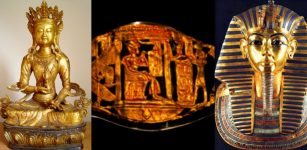 Ancient Sophisticated Technologies: Mercury-Based Gilding That We Still Can’t Reach
Ancient Technology | Aug 1, 2018
Ancient Sophisticated Technologies: Mercury-Based Gilding That We Still Can’t Reach
Ancient Technology | Aug 1, 2018 -
 The First Australians Ate Giant Eggs Of Huge Flightless Birds That Went Excinct Over 47,000 Years Ago
Archaeology | May 25, 2022
The First Australians Ate Giant Eggs Of Huge Flightless Birds That Went Excinct Over 47,000 Years Ago
Archaeology | May 25, 2022 -
 7,000-Year-Old Native American Underwater Burial Site Discovered Off The Coast Of Florida
Archaeology | Mar 3, 2018
7,000-Year-Old Native American Underwater Burial Site Discovered Off The Coast Of Florida
Archaeology | Mar 3, 2018 -
 History Shows: Taxes And Bureaucracy Are Cornerstones Of Democracy
Archaeology | Feb 18, 2021
History Shows: Taxes And Bureaucracy Are Cornerstones Of Democracy
Archaeology | Feb 18, 2021 -
 Huge Unknown Ancient Lost World Discovered Inside Giant Sinkhole In China
News | May 19, 2022
Huge Unknown Ancient Lost World Discovered Inside Giant Sinkhole In China
News | May 19, 2022

